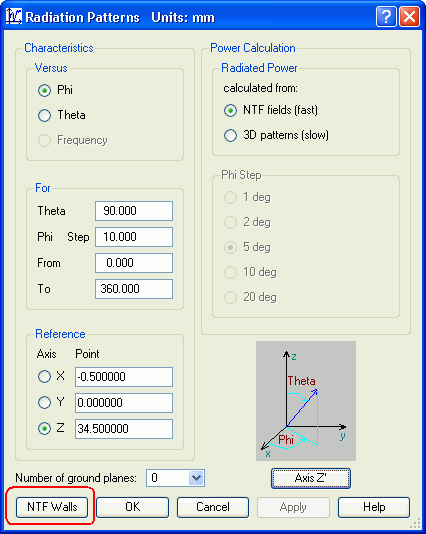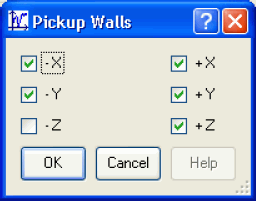


© 2017 QWED Company. All rights reserved. 2017 | Home | Events | Products | Applications | Projects | About | Support | Log In
SOFTWARE PRODUCTS
HARDWARE PRODUCTS
APPLICATIONS
ABOUT
SUPPORT
Disconnecting NTF walls
9. Disconnecting NTF walls
The principle of near-to-far field transformation requires that the radiating structure be surrounded by a closed surface, unless symmetries are explored. There are, however, cases when we may wish to calculate radiation patterns using only some of the pickup walls. A practical application would be to directly compare simulated and measured results, with near-field measurements taken over a single aperture. Another case is more FDTD-specific: due to numerical dispersion and the necessity to average either electric or magnetic field components across each pickup wall, a wave that physically propagates in one direction may numerically generate a non-physical backward lobe. The amplitude of such a parasitic lobe is usually very small and depends on the FDTD meshing. However, in cases of some high-gain antennas it may be important to know if a backward radiation at the level of -50dB or so is a physical effect or a numerical artifact caused by finite accuracy of the applied computational method. A simple way to verify this is to disconnect the pickup surface “looking” in its direction from NTF transform and to check how the results change. Starting with version 6.0, selected NTF walls may be disconnected from a single transformation, see Section UG 2.3.7 for more details.
The principle of near-to-far field transformation requires that the radiating structure be surrounded by a closed surface, unless symmetries are explored. There are, however, cases when we may wish to calculate radiation patterns using only some of the pickup walls. A practical application would be to directly compare simulated and measured results, with near-field measurements taken over a single aperture. Another case is more FDTD-specific: due to numerical dispersion and the necessity to average either electric or magnetic field components across each pickup wall, a wave that physically propagates in one direction may numerically generate a non-physical backward lobe. The amplitude of such a parasitic lobe is usually very small and depends on the FDTD meshing. However, in cases of some high-gain antennas it may be important to know if a backward radiation at the level of -50dB or so is a physical effect or a numerical artifact caused by finite accuracy of the applied computational method. A simple way to verify this is to disconnect the pickup surface “looking” in its direction from NTF transform and to check how the results change. Starting with version 6.0, selected NTF walls may be disconnected from a single transformation, see Section UG 2.3.7 for more details.


discover accurate EM modelling






